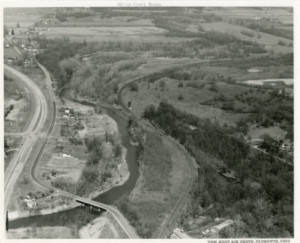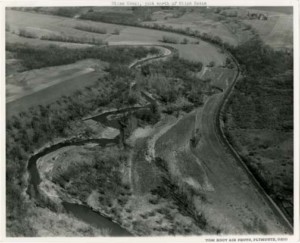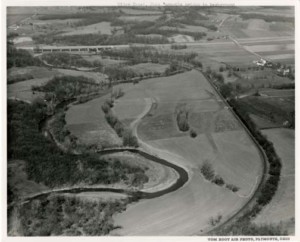THE MILAN CANAL
Construction of the Milan Canal began in 1833 and the first canal boats were launched on July 4, 1838. It opened to lake navigation on July 4, 1839. The peak year of commerce was 1847. For 15 years or more, the village prospered as one of the busiest ports on the Great Lakes. Large numbers of wagons bringing agricultural products to Milan would often line up for miles to the south.
During the canal era, Milan became the birthplace of businessman and inventor Thomas Alva Edison, and the small hillside brick home where he was born on February 11, 1847 is open to the public as a museum. He lived in Milan until he was 7 years of age, when his family moved to Port Huron, Michigan.
Local brokerages and trading houses exchanged the agricultural commodities of farmers for currency, hardware, and trade goods brought in across Lake Erie from the East by way of the Erie Canal. The Milan Canal was deep and directly connected to Lake Erie, allowing Lake Erie schooners to transport goods to and from Milan without the use of small, shallow-draft canal boats required on other canals. The confluence the deep ship-bearing canal, the great agricultural fertility of the regional Ohio soils, and the direct access to New York markets by way of the Erie Canal made Milan a retail center from the 1830s to the early 1850s.
However, with the advent of railroads in the 1850s, the canal-borne prosperity terminated. In 1868, the canal’s feeder dam failed due to a flood, permanently ending Milan’s direct connection to the lake. The original canal route can be observed and followed today along the Erie MetroParks “Huron River Greenway.”
The deep canal and inland harbor also served as a ship building center, in part because of extensive local stands of white oak timber used in ship building. Approximately 60 ships were built in Milan between 1840 and 1867.
During the period, the canal-based prosperity allowed the construction of a large number of buildings of architectural note. Today, Milan retains a significant number of both residences and commercial buildings from the 19th century, representing typical architectural styles of the time.
From the late 1820s and into the 1830s, Federal Style buildings were constructed, many of which survive. In the 1840s and 50s, the Greek Revival style predominated in Milan, as it did in the rest of the Connecticut Western Reserve (the northeastern counties of Ohio). Today, Milan’s neighborhoods abound with original Greek Revival houses, along with a number of other later, Victorian architectural styles.
You can take a tour of some of these houses HERE.




